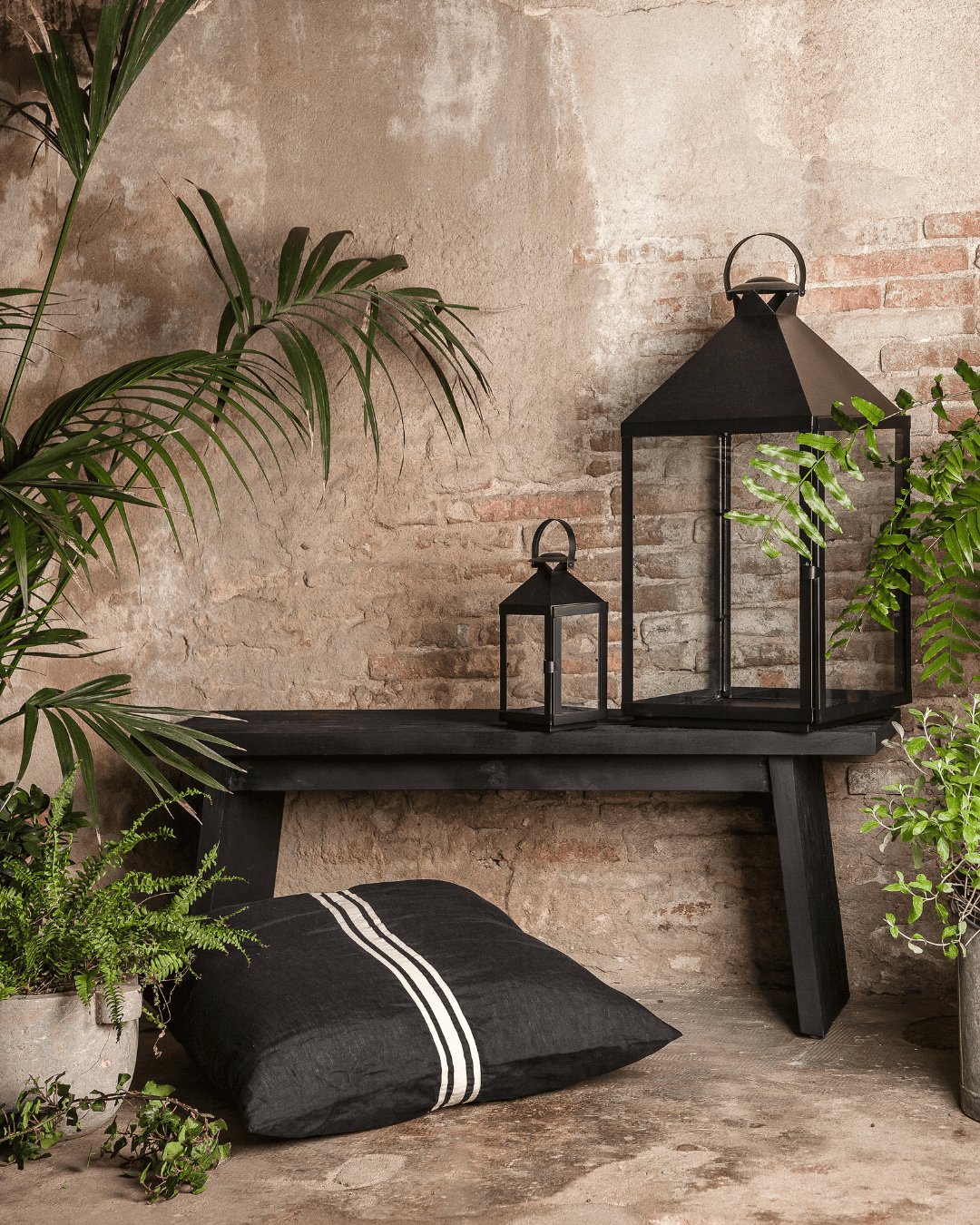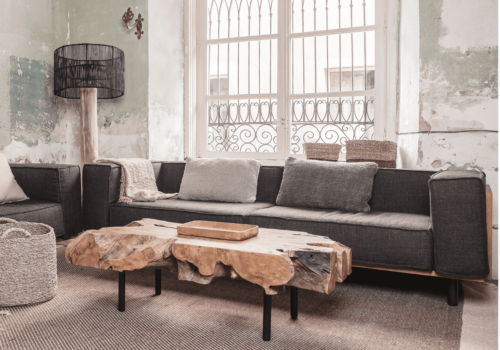Las plantas de interior son un aliado imprescindible para dar vida y frescor a la casa. Son vistosas, coloridas y transforman rápidamente la atmósfera de los distintos espacios, volviéndolos más naturales y vivos.
Igual que los distintos espacios del hogar presentan diversas virtudes, la gran variedad de plantas de interior que existen, complementará distintivamente cada ambiente a medida.
Plantas de interior para salón
Al ser el salón uno de los puntos con mayor actividad en los hogares, lo más acorde es hacer una selección de plantas coloridas y llenas de vida, teniendo en cuenta que tenga la luz necesaria para poder dar todo de sí.
Lirio de la paz o planta de la paz: Además de ser una planta con una flor muy vistosa y elegante, resulta bastante sencilla de cuidar, y pide unas condiciones nada complejas. Un espacio a una temperatura agradable y fresca y poca luz bastarán para darle un buen lugar. Sus cuidados se reducen a un riego diario con pulverizador, preferiblemente con agua destilada, acompañado de la limpieza semanal de sus hojas con un trapo suave, y la aplicación de fertilizando soluble en el agua una vez al mes.
Otra opción de planta llamativa y fácil de mantener, podría ser la Sanseveria Trifasciata, que con uno o dos regados semanales lucirá a la perfección. Su cuidado es simple, pero hay que medir bien el agua, ya que es una especia propensa a ahogarse. Según el feng shui, estas plantas también son ideales para la entrada de la casa.
Una planta que además es muy sencilla de encontrar y que ronda precios más que asequibles es el Photos, cuyas hojas verdes y vibrantes pueden decorar cayendo suavemente desde una maceta colgante.
Si ya se tiene cierta experiencia en el cuidado de plantas, otras recomendaciones, más complejas, pero perfectas para completar espacios relajantes, pueden ser la aspidista, si el salón ofrece un entorno fresco, o una alocasia si se trata de un espacio más cálido.

Plantas de interior para dormitorio
El hecho de que muchas plantas consumen oxígeno por la noche preocupa a una gran cantidad de usuarios y aficionados a la botánica, pero realmente, la cantidad de O2 que éstas ocupan, no afectan a la respiración, ni al descanso de quien comparta el espacio nocturno con ellas.
Igualmente, existen multitud de especies que no consumen oxígeno en la noche, y siguen manteniendo su frescor todo el día, además de aportar su respectivo valor estético.
El aloe vera puede ser una buenísima opción para decorar un dormitorio, a pesar de sus formas puntiagudas, es una planta que ofrece calma, y que limpia el aire y lo mantiene fresco. Además, sus hojas pueden utilizarse con muchos fines, como para hidratar la piel de forma completamente natural.
Alguna planta de bambú también puede aportar ricas formas a un espacio relajante, un toque zen que tampoco exige prácticamente cuidados, y que crecerá relativamente rápido, convirtiéndose en una agradecida aliada para la decoración.
Si lo que se desea es aportar un toque de color, se puede encontrar algo de inspiración en los hermosos patios cordobeses; unos geranios y gerberas aportarán alegría y naturalidad a cualquier espacio que bañe la luz.
Plantas de interior para la cocina
La cocina es un espacio ideal para decorar y complementar con plantas. Las cocinas suelen ser espacios cargados de luz y vida, en los que reinan los aromas y las texturas, y son perfectas para albergar especies compactas y comestibles, que aporten un toque natural y fresco a los platos.
Plantas aromáticas como la menta, albahaca o la lavanda pueden ser unas opciones magníficas, o incluso puede estudiarse la posibilidad de empezar un pequeño huerto ecológico en la zona de la ventana. Es el lugar perfecto para dejar volar la creatividad y potenciar la habilidad culinaria.
Plantas de interior para comedor
Un buen comedor con aires naturales necesita su toque de frescor natural y vibrante, y qué mejor manera de dárselo, que con unas piezas de madera reciclada natural, y especies amplias y atractivas de plantas de interior.

Una palmera de interior puede sonar demasiado aparatoso, pero la luz y calidez de un comedor puede presentar el entorno perfecto para este tipo de plantas.
La areca de palma es una especie increíblemente vistosa, que se encontrará a gusto entre los 18 y los 25 grados.
Su riego ideal será cada dos o tres días en verano, reduciéndose según se acerque el invierno. Al ser una planta tropical, deberá contar con un sustrato constantemente húmedo, y no soportará bien los encharcamientos.
El ficus robusta destaca por sus hermosas hojas y su versatilidad. Lo ideal es colocarlo en un lugar donde llegue luz brillante e indirecta, pero sabe adaptarse a lugares un poco más frescos y en sombra.
Su tierra debe mantenerse húmeda, pero su regado no debe ser excesivo.
La palmera de bambú aporta energía a los espacios, perfecta para comedores que se comparten en familia.
Debe vigilarse de los ácaros, algunas especias de arañas pueden ser letales para ella.
Otro consejo para mantener la limpieza, el frescor y la naturalidad en los ambientes, además de reducir el uso de productos contaminantes, es limpiar sin químicos las superficies de los muebles y espacios.







